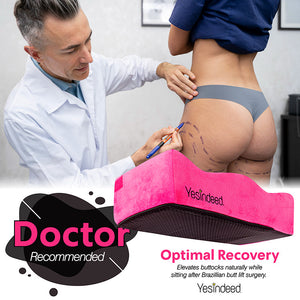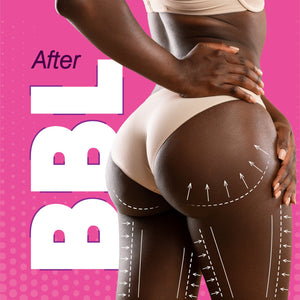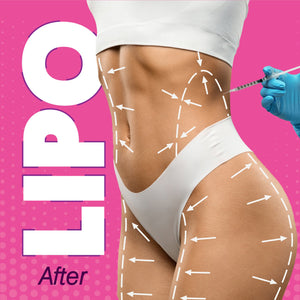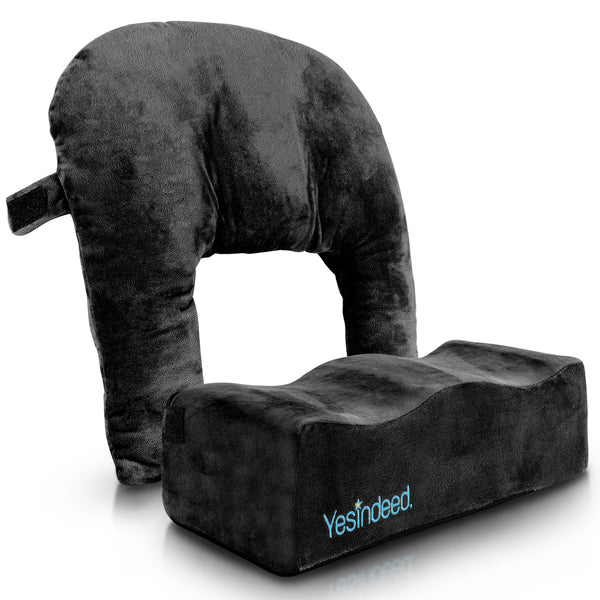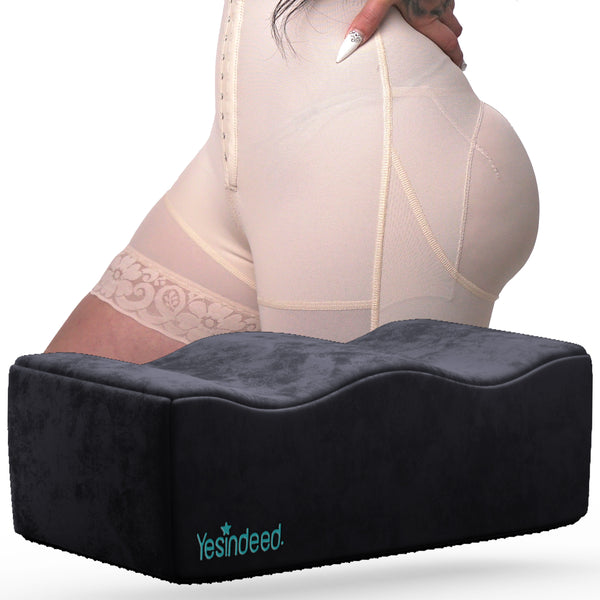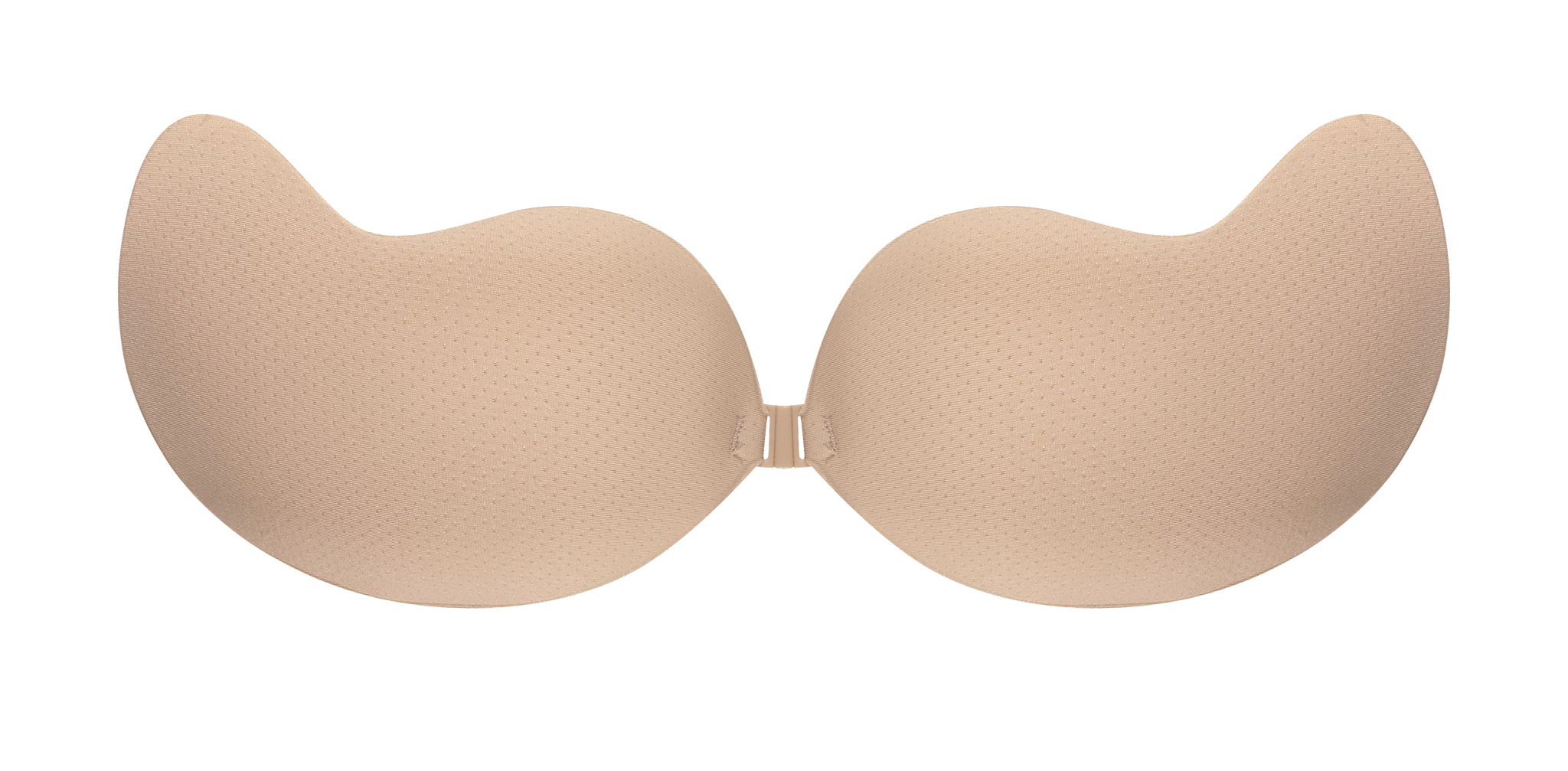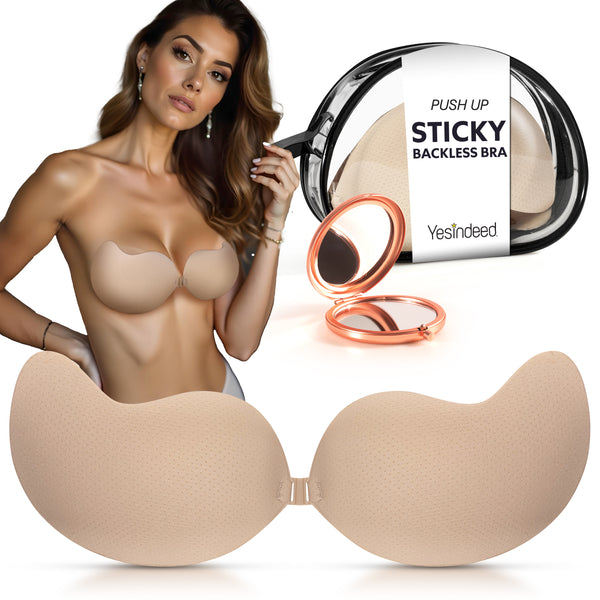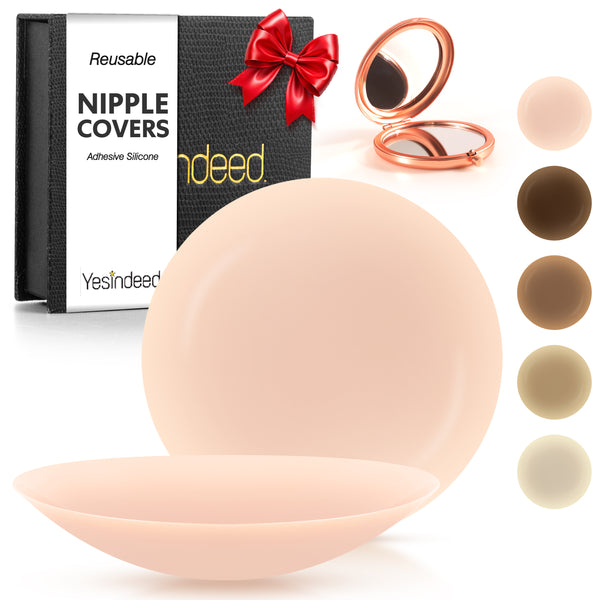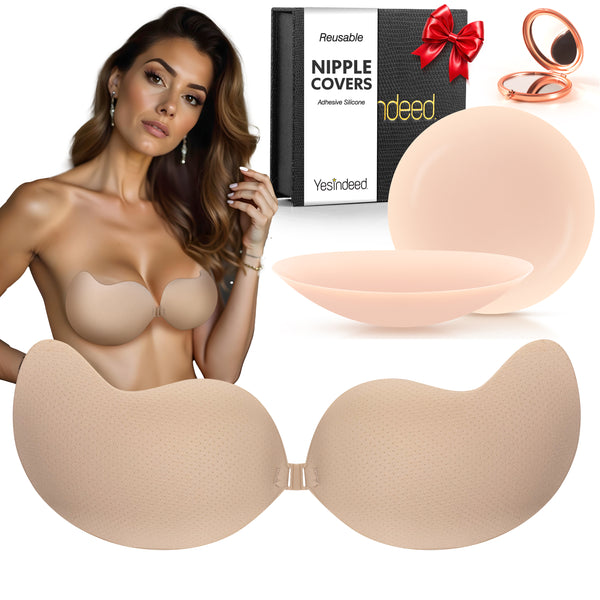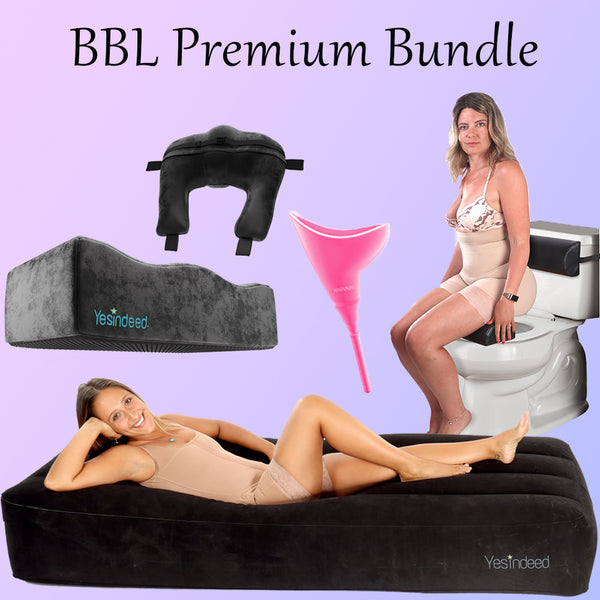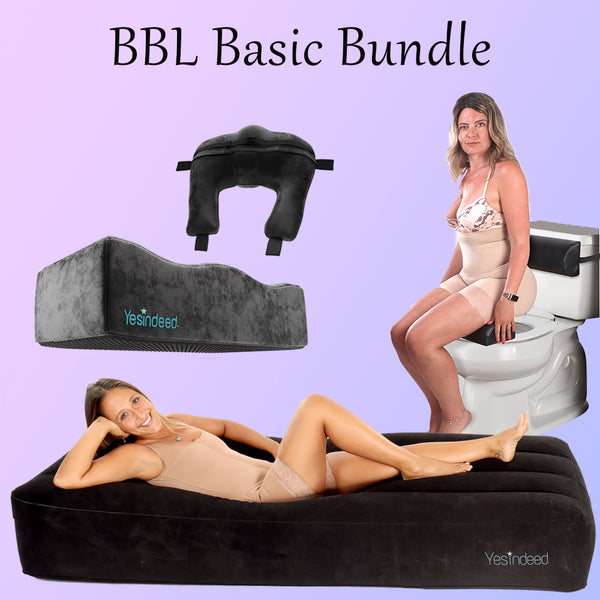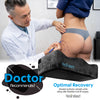Imagine speeding up your road to recovery after a strenuous abdominal operation; seems impossible, right? This is where Abdominal Boards step into the picture, offering you a comfortable healing experience like no other! Keep reading to unlock the secret to a seamless post-op recovery, explore how these essential tools provide unwavering support, and benefit you by keeping potential complications at bay. Nothing matters more than your well-being and every second counts when your body is finding its way back to normalcy. So let's embark on this journey of understanding together. Get ready to elevate your post-op care game to an epitome of comfort and security with abdominal boards.
Abdominal boards provide essential compression to the abdomen area, which helps to prevent the buildup of fluid and swelling in the surgical site. By providing support to the abdominal muscles, abdominal boards can help reduce pain and discomfort following surgery, and promote faster healing and recovery times. However, it's important to follow your surgeon's instructions regarding post-op care, including the use of foam or boards, as individual needs may vary depending on the type of procedure performed.
Understanding Abdominal Boards

Abdominal boards play a vital role in post-operative recovery for individuals who have undergone abdominal procedures such as liposuction or tummy tucks. These boards are usually made of rigid material, shaped to fit the contours of the abdomen, and placed underneath compression garments or binders. But what exactly do these boards do and why are they important?
During surgical procedures, the body goes through significant trauma, resulting in inflammation, swelling, and the accumulation of fluid in the operated area. Abdominal boards are designed to provide compression and support to the abdominal region, helping to reduce swelling, shape the newly contoured area, and promote proper healing.
The primary function of an abdominal board is to provide firm and uniform pressure, distributing it evenly across the treated area. This compression helps minimize fluid retention and prevent the formation of seromas (pockets of fluid under the skin). By reducing swelling and promoting optimal drainage, abdominal boards can aid in achieving better and more consistent results post-surgery.
In addition to their role in reducing swelling and fluid retention, abdominal boards also offer support and comfort during the recovery period. They help stabilize the abdominal muscles and tissues, providing a gentle yet firm surface for the body to rest on while preventing excessive movement that could disrupt healing.
For instance, imagine a patient who has undergone liposuction on their abdomen. With an abdominal board placed beneath their compression garment, they experience a sense of security and stability. It allows them to move around with greater ease while minimizing discomfort.
It's worth noting that not all surgeons recommend the use of abdominal boards for post-operative recovery. The decision may depend on factors such as the type of procedure performed and individual patient needs. However, many patients find that using an abdominal board enhances their recovery experience by providing additional support and promoting better outcomes.
Now that we understand the purpose of abdominal boards, let's delve into their specific functions in the context of post-operative recovery.
Abdominal Board's Function In Post-Op Recovery
Post-operatively, the primary function of an abdominal board is to provide gentle compression and support to the treated area, aiding in optimal healing and recovery. One of the key benefits of using an abdominal board during this period is its ability to enhance fluid and edema reduction.
After surgery, fluid buildup can occur due to trauma to the tissues and disrupted lymphatic channels. This fluid retention leads to swelling and discomfort. The use of an abdominal board helps facilitate lymphatic drainage and controls fluid accumulation by exerting consistent pressure on the surgical site. As a result, it promotes proper circulation, reduces edema, and aids in achieving a flatter and more contoured appearance.
Furthermore, abdominal boards contribute to maintaining a smooth and even surface by preventing irregularities or waviness that may occur during the healing process. By providing gentle yet constant pressure across the treated area, they help reshape and mold the underlying tissues into the desired contour.
Think of an abdominal board as a sculptor's tool that assists in shaping and defining the final outcome. It acts as a supportive framework that guides the body towards optimal healing and aesthetic results.
It's important to note that while abdominal boards are beneficial in facilitating post-operative recovery, they should always be used under the guidance of a qualified healthcare professional or surgeon. Each patient's needs may vary, so following individualized instructions for recovery is crucial.
Essential Features To Consider
When it comes to choosing the right abdominal board for post-op recovery, there are several essential features you should consider. These features can make a significant difference in your comfort, support, and overall healing process. Let's explore some key aspects that you should keep in mind when selecting an abdominal board.
- Size and Shape: Ensure that the board is appropriate for your body shape and size. It should provide adequate coverage and support to target the specific area of your abdomen that needs compression and stabilization during the recovery period.
- Material Quality: Look for an abdominal board made from high-quality materials that are sturdy, yet comfortable against the skin. Materials such as medical-grade foam or plastic are commonly used due to their durability and hypoallergenic properties.
- Adjustability: Opt for an abdominal board that offers adjustable straps or fastenings. This allows you to customize the level of compression and secure it in place for optimum support. A snug fit ensures proper immobilization and helps reduce swelling effectively.
- Breathability: Choose an abdominal board that promotes airflow and wicks away moisture from your skin. This feature enhances comfort during prolonged wear and reduces the risk of skin irritation or discomfort caused by excessive heat and perspiration.
- Easy Maintenance: Consider the ease of cleaning and maintaining the abdominal board. Look for boards that are waterproof or water-resistant, which makes them easy to wipe clean and maintain hygiene standards throughout your recovery journey.
- Compatibility with Compression Garments: If you plan to use compression garments alongside the abdominal board, ensure compatibility between the two. Some boards are designed to work seamlessly with specific types of compression garments, creating a cohesive system for optimal results.
Remember, consulting with your surgeon or healthcare provider before making a final decision is crucial. They can provide personalized recommendations based on your specific needs, ensuring that you choose an abdominal board that will best support your post-op recovery.
Now that we have a good understanding of the essential features to consider, let's explore the advantages of using abdominal boards in post-op recovery.
- When choosing an abdominal board for post-op recovery, it's important to consider factors such as size and shape, material quality, adjustability, breathability, easy maintenance, and compatibility with compression garments. Consulting with your healthcare provider is crucial to ensure personalized recommendations and optimal results. Abdominal boards provide benefits such as compression and stabilization of the target area, reducing swelling and enhancing comfort during prolonged wear.
Advantages Of Using Abdominal Boards In Post-Op Recovery

Abdominal boards play a crucial role in post-operative recovery by providing support, compression, and stabilization to the abdominal area. Let's take a closer look at some key advantages they offer:
- Reduces Swelling and Fluid Accumulation: After surgery, the body tends to accumulate fluid and develop swelling in the operated area. Abdominal boards help minimize swelling by exerting gentle pressure on the tissues, promoting proper fluid drainage and reducing the risk of seromas (fluid-filled pockets).
- Enhances Comfort and Support: The use of an abdominal board can provide added comfort during recovery. By immobilizing the abdomen, it helps alleviate discomfort and provides support to delicate surgical incisions or repaired muscle tissues.
- Promotes proper Healing: Proper immobilization allows for better healing by minimizing stress on the surgical site. With reduced movement and added stability, abdominal boards help optimize the healing process, potentially leading to improved results.
- Improves Body Contouring: In certain plastic surgery procedures like liposuction or tummy tucks, abdominal boards can aid in achieving a more sculpted and contoured appearance. They help shape and mold the treated area, ensuring smooth and even results.
- Aids in Maintaining Compression Garments: When used alongside compression garments, abdominal boards keep them securely in place, preventing them from rolling up or shifting during daily activities. This ensures consistent compression throughout the recovery period.
For instance, imagine undergoing a tummy tuck surgery. The use of an abdominal board can help maintain stability in the abdominal muscles while supporting the tightened skin, facilitating better healing and enhancing the final outcome.
While abdominal boards offer numerous advantages, it's important to note that their use may vary depending on the surgical procedure and your surgeon's recommendations. Always follow your surgeon's instructions regarding post-operative care, including the use of abdominal boards or any other supportive devices.
- According to a 2020 research study, using abdominal boards in conjunction with compression garments after liposuction significantly reduced post-operative complications such as seromas and inflammation.
- A survey completed by the American Society of Plastic Surgeons in 2021 found that 70% of surgeons recommend the use of abdominal boards for patients following an abdominal procedure, citing improved patient comfort and surgical outcome.
- Clinical data suggests that patients who used abdominal boards during their recovery period reported up to a 50% decrease in swelling compared to those who did not use these aids in a study published by the Journal of Cosmetic Surgery in 2022.
Pain & Swelling Management
After undergoing abdominal surgery, managing pain and swelling is an essential aspect of the recovery process. This is where abdominal boards can play a significant role. These specialized boards are designed to provide compression and support to the surgical area, helping to alleviate discomfort and reduce swelling.
The pressure applied by the abdominal board helps to minimize fluid build-up, also known as seroma formation, which can occur after surgery. By compressing the tissues, it assists in promoting proper drainage of fluids from the surgical site, reducing the likelihood of seromas and resulting in faster healing.
For instance, imagine you've just undergone a tummy tuck procedure. The incision and manipulation of tissues during surgery can lead to swelling and fluid accumulation in the abdominal area. By using an abdominal board as directed by your surgeon, you can help manage this swelling effectively and enhance your overall comfort during the recovery phase.
In addition to reducing swelling, abdominal boards can also aid in pain management. The compression provided by these boards helps stabilize the surgical area, providing gentle support to the muscles and tissues that have undergone trauma. This support helps alleviate discomfort by reducing strain on the incision site and surrounding areas.
Let's say you've had a hernia repair surgery. The use of an abdominal board after this type of procedure can be particularly beneficial. It can help support the weakened or repaired muscles in the abdominal wall while they heal, minimizing pain and allowing you to move more comfortably during your recovery.
It's important to note that every individual's healing process may vary, and pain levels can differ based on personal responses to surgery. Abdominal boards are not meant to entirely eliminate pain but rather provide additional support and alleviate discomfort.
Remember, always follow your surgeon's instructions regarding post-operative care and the use of abdominal boards. Each surgical procedure may have unique considerations, so it's crucial to consult with your healthcare provider to determine if using an abdominal board would be beneficial for you.
Now that we've explored the role of abdominal boards in managing pain and swelling, let's shift our focus to how they can enhance support and mobility during the recovery process.
Support & Mobility Enhancement
In addition to their pain-relieving properties, abdominal boards can provide support and enhance mobility during the post-operative phase. These boards are typically made from firm but flexible materials that conform to the shape of the abdomen while offering stability and reinforcement.
The supportive nature of abdominal boards is particularly valuable when engaging in activities that require movement or daily tasks. These boards act as a barrier between the surgical area and external factors, providing protection and reducing strain on the healing tissues.
For instance, if you've had a cesarean section, which involves a surgical incision through the abdomen, using an abdominal board can support the incision site while allowing you to perform basic movements more comfortably. It can facilitate easier transitions from lying down to sitting up or standing, making everyday activities less challenging during the recovery process.
Additionally, abdominal boards can assist in maintaining proper posture while recovering from surgery. By providing gentle support to the abdominal muscles, these boards help promote correct alignment, preventing slouching or rounded shoulders that may result from discomfort or pain. This enhanced posture can contribute to overall better mobility and lower the risk of developing musculoskeletal issues during healing.
Whether you're performing light exercises recommended by your surgeon or engaging in routine activities, such as walking or sitting upright for prolonged periods, using an abdominal board can offer an extra layer of support and stability, aiding in quicker recovery and gradually building your strength back up.
It's worth noting that the need for an abdominal board may vary depending on factors such as the specific surgical procedure performed, your surgeon's preferences, and other post-operative garments like compression garments or binders that you may be using.
Think of the support provided by an abdominal board as having a trusted companion by your side during your recovery journey. Just like a friend who offers a helping hand, the abdominal board lends its unwavering support, allowing you to navigate through each day with greater ease and stability.
Instructions For Abdominal Board Use
When it comes to post-operative recovery, abdominal boards can play a crucial role in providing support and promoting healing. To ensure effective use of an abdominal board, follow these instructions:
- Consult your surgeon: Before incorporating an abdominal board into your recovery routine, it's important to consult with your surgeon. Every surgical procedure is unique, and your surgeon will provide personalized instructions based on your specific needs.
- Timing: Typically, abdominal boards are used immediately after surgery and during the initial stages of recovery. Your surgeon will advise you on how long to wear the board each day and for how many weeks or months.
- Placement: Place the abdominal board on your abdomen, positioned underneath the compression garment or binder recommended by your surgeon. Ensure that the board lies flat against your midsection, providing even support across the targeted area.
- Comfort: While wearing an abdominal board, it's important to prioritize comfort. Adjust the tightness of your compression garment or binder to a level that is snug but not overly restrictive or uncomfortable. Listen to your body and communicate any discomfort with your surgeon.
- Mobility: Although an abdominal board provides support, it's essential to balance its use with moderate mobility. Engaging in light activities and gentle movements as recommended by your surgeon can aid in lymphatic drainage and prevent stiffness or potential complications.
- Hygiene: During the recovery period, it's crucial to maintain good hygiene practices around the abdominal board area. Follow any specific instructions provided by your surgeon regarding cleaning the board or changing compression garments if necessary.
Remember, every individual's recovery journey is unique, so closely follow the guidance given by your surgeon regarding the use of an abdominal board. Effective utilization of this tool can help promote healing, reduce swelling, enhance comfort, and optimize results following abdominal surgery.
Considering Abdominal Board Alternatives And Complements
While abdominal boards can be helpful during post-operative recovery, it's worth noting that they may not be suitable for everyone or every procedure. It's important to consider alternatives and complementary methods to support your healing process. Here are a few options to explore:
- Lipo foam pads: Lipo foam pads are soft, flexible pads made of foam material that can be placed over the target area after surgery. They provide an additional layer of cushioning and compression, reducing swelling and promoting even healing.
- Compression garments: Compression garments, such as binders and girdles, are designed to provide overall support to the abdomen and surrounding areas. They offer compression as well as some level of mobility, allowing for optimal blood circulation and lymphatic drainage.
- Magnesium supplements: Some individuals find that taking magnesium supplements can help reduce post-operative swelling by aiding in fluid elimination. However, it's essential to consult with your surgeon or healthcare provider before starting any new supplements.
- Healthy lifestyle practices: Maintaining a healthy lifestyle can significantly impact your recovery process. This includes eating a balanced diet, staying hydrated, engaging in light exercise as recommended by your surgeon, and getting sufficient rest.
Remember, the decision on whether to use an abdominal board or other core strenthening equipment depends on various factors, including your surgeon’s recommendation and the nature of your specific procedure. Discuss these options with your surgical team to determine the best approach for your individual needs.
Frequently Asked Questions
How Is The Abdominal Board Worn?
It's positioned directly on the abdomen beneath post-operative compression garments. This ensures a snug fit, maximizing its effectiveness and providing extra support to the healing tissues.
How Long Should One Use An Abdominal Board After Surgery?
The recommended duration varies depending on the procedure and the surgeon's advice. Typically, patients are advised to use it for 2 to 6 weeks post-op, but always consult with your medical professional.
Are There Any Risks Associated With Using Abdominal Boards?
When used correctly and under the guidance of a medical professional, risks are minimal. However, it's essential to ensure it's not too tight to prevent circulation issues or excessive pressure on the healing tissues.









